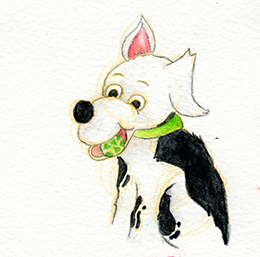Drawn to Make Cool Stuff
- kate3633
- Sep 8, 2023
- 3 min read
Updated: Sep 15

“The brain is a muscle that can move the world.” - Stephen King
I’ve always found other creators’ processes for making fascinating and extremely valuable as a learning tool. Check out some other artists I’ve obsessed over lately with exciting art and process. Finally, I’ll also share my favorite maker's way of drawing between, in, and out of the lines.
The Fan Brothers @thefanbrothers create their signature style for picture books by passing the art back and forth and drawing on each other’s work–that’s collaboration! This astonishes and humbles me. I would guess most creators may have difficulty exerting that much humility and grace with their work–it’s so personal. Their art is unbelievable, though, so the results speak for themselves.
@barousseworks by Daniel Barousse creates beautiful custom wooden works of art using recycled skateboards glued together and then shaped. He chisels and smooths the decks using a lathe and other hand tools. If you're curious, he has some great videos showing himself at work on his Instagram. As a side note, he also gives a slice of his profit to an environmental charity. Swoon. I mean, seriously, well done.
My woodworking skills are subpar. Ha! But I might share how I go about making illustrations.
Illustrating the Hart Way
1. Sketch…sometimes A LOT before getting to an idea I like.
2. Watercolor and Acrylic
I love these two mediums. The paper used is so tactile, and I actually prefer the textured paper to a smooth finish, even though it makes the digital part a little trickier. The result feels so much richer to me. I use watercolor brushes and pencils to control the color better than a traditional paint set and brush. I also enjoy the vibrancy of acrylic and watercolor, especially when mixed and layered on top of one another.
3. Scan
I usually take my time here and scan color and black and white. One to test contrast. And, two, to give me options for layering later.
4. Photoshop/Procreate/Design
At this stage, I will use digital paint brushes in Procreate to add another layer of depth and texture. Then, with design techniques in Photoshop, I will manipulate the color, clean up stray marks and otherwise put the finishing touches on the art before pulling it into a layout program like InDesign or Illustrator to assemble the piece with copy.

There are so many unique ways to make out there. This is just one of mine. But it’s one I often use within the picture book realm of my work. I’ve also found this process helpful with logos, pattern work, and specialized illustration projects that roll across my desk. I hope you found my process enjoyable, and if not, well, the article was short, so with luck, you’re mildly entertained.
If you’re a maker with an excellent process, slide in our DM’s @harthousecreative and tell us about it. We’d love to learn from your magnificent skills!
Everything we share here is meant to be helpful and inspiring. We’re speaking from experience. Please consult a qualified professional to help make decisions. You are responsible for how you choose to use this information, and we are not liable for any loss, damages, or issues that may arise. We can’t be responsible for how things play out, but we’re always rooting for your success!
Credits
Author and Editor: Jenn Hart (More About Me)
Associate Editor: Vicki Goebner
Popular Related Articles
Subscribe to The Squeeze on our little piece of the internet to get design promotions, resources, stories about other creatives, and inspiration for your eyeballs and brainstorms.










































